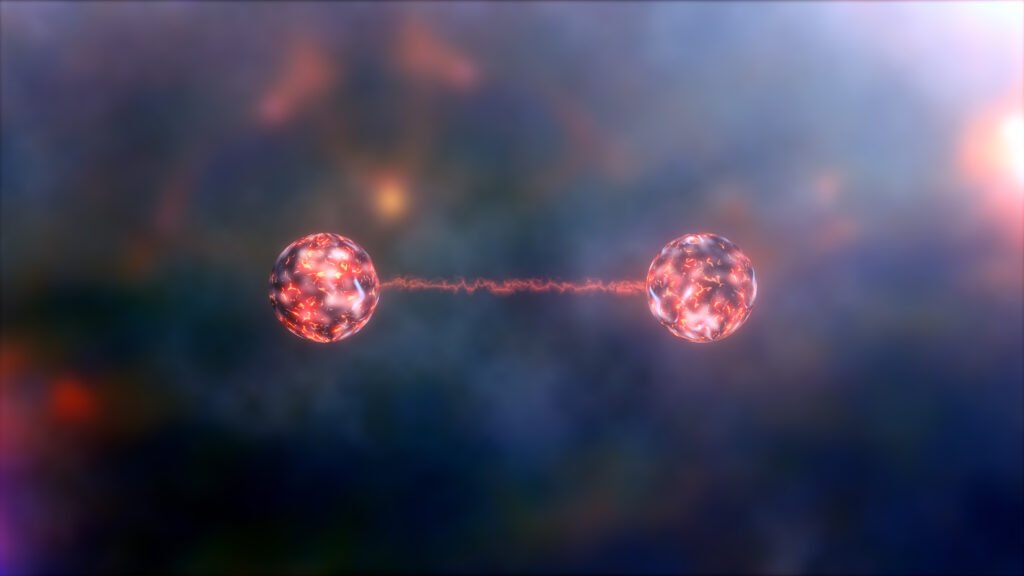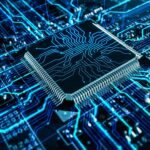Quantum superposition is a cornerstone of quantum mechanics, a principle that allows particles to exist in multiple states simultaneously until measured, defying the deterministic logic of classical physics. This phenomenon enables quantum computers to perform complex calculations at unprecedented speeds for specific problems, revolutionizing fields like cryptography, drug discovery, and optimization. From its theoretical inception in the early 20th century to recent experimental breakthroughs, such as those at Berkeley, superposition has been pivotal in advancing our understanding of the quantum world and making quantum computing a reality. This article provides a detailed exploration of superposition, including a non-technical explanation, its scientific foundations, its historical development involving Einstein and bosons, and recent advances that have propelled quantum computing forward.
Non-Technical Explanation: What is Superposition?
Imagine you’re flipping a coin, but instead of landing on heads or tails, the coin is spinning in the air, representing both heads and tails at the same time. Only when you catch and look at it does it become one or the other. This is what superposition is like in the quantum world. Tiny particles, like electrons or photons, can exist in multiple states—like spinning up and down, or being in two places at once—until we observe or measure them. When we do, they “choose” one state, but before that, they’re in a mix of all possible states.
This strange ability is what makes quantum computers so powerful. A regular computer is like a chef who tries one recipe at a time. A quantum computer, using superposition, is like a chef who can try every possible recipe at once, finding the best one faster. Superposition was a wild idea when scientists like Albert Einstein first grappled with it, and it’s tied to other quantum oddities like bosons (particles like photons that can share states) and entanglement (where particles are mysteriously linked). For years, building quantum computers was nearly impossible because these delicate quantum states are easily disrupted. But recent breakthroughs, including experiments at places like Berkeley, have shown we can control superposition well enough to build working quantum computers, opening doors to new technologies.
Scientific Explanation: The Mechanics of Superposition
Quantum superposition is a fundamental principle of quantum mechanics, stating that a quantum system can exist in a linear combination of its possible states until measured, at which point it collapses to one state. Mathematically, the state of a quantum system, such as a qubit, is described by a wave function in a Hilbert space:
[ |\psi\rangle = \alpha|0\rangle + \beta|1\rangle ]
where (|0\rangle) and (|1\rangle) are basis states, and (\alpha) and (\beta) are complex probability amplitudes satisfying (|\alpha|^2 + |\beta|^2 = 1). The probabilities of measuring the system in state (|0\rangle) or (|1\rangle) are (|\alpha|^2) and (|\beta|^2), respectively. This superposition allows a qubit to represent multiple states simultaneously, unlike a classical bit, which is strictly 0 or 1.
Superposition is often illustrated by the double-slit experiment, where particles like electrons or photons pass through two slits, creating an interference pattern on a screen, indicating they exist in a superposition of passing through both slits until measured. Another famous example is Schrödinger’s cat, a thought experiment where a cat in a box is in a superposition of “alive” and “dead” until observed, highlighting the counterintuitive nature of quantum mechanics.
Superposition is closely tied to other quantum phenomena:
- Entanglement: When two or more particles are correlated such that the state of one depends on the other, regardless of distance. For example, an entangled state might be:
[ |\Psi\rangle = \frac{1}{\sqrt{2}}(|00\rangle + |11\rangle) ]
- Quantum Interference: Manipulates probability amplitudes to amplify desired outcomes and suppress others, a key mechanism in quantum algorithms.
- Measurement Collapse: Observing a quantum system forces it into one definite state, destroying the superposition.
In quantum computing, superposition enables quantum parallelism, where a quantum computer processes all possible combinations of qubit states simultaneously, exponentially increasing computational power for certain problems.
Bosons and Superposition
Bosons are a class of particles (e.g., photons, gluons, Higgs boson) that obey Bose-Einstein statistics, allowing multiple particles to occupy the same quantum state. Unlike fermions (e.g., electrons), which are restricted by the Pauli exclusion principle, bosons can “pile up” in the same state, enhancing superposition effects. For example, in a Bose-Einstein condensate (BEC), a gas of bosonic atoms cooled to near absolute zero enters a single quantum state, exhibiting macroscopic quantum phenomena like superposition and coherence.
Bosons are critical in quantum computing:
- Photonic Quantum Computing: Photons, which are bosons, are used in systems like those developed by Xanadu or PsiQuantum. Superposition of photon states (e.g., polarization) enables quantum computations.
- Boson Sampling: A computational task where a photonic quantum computer samples the distribution of photons passing through a linear optical network. In 2020, researchers at the University of Science and Technology of China (USTC) demonstrated quantum advantage with their Jiuzhang photonic quantum computer, performing boson sampling with 76 photons in 20 seconds, a task estimated to take classical supercomputers 600 million years.
Historical Context: Einstein, Bosons, and Superposition
The concept of superposition emerged with quantum mechanics in the early 20th century, and Albert Einstein played a pivotal role in both advancing and challenging it.
Early 20th Century: Birth of Quantum Mechanics
- 1900–1920s: Max Planck, Niels Bohr, and others developed quantum theory to explain phenomena like blackbody radiation and atomic spectra. Werner Heisenberg and Erwin Schrödinger formalized quantum mechanics, with Schrödinger’s wave equation (1926) showing that quantum states are superpositions of solutions.
- 1924–1925: Satyendra Nath Bose and Einstein developed Bose-Einstein statistics, describing bosons and predicting the possibility of Bose-Einstein condensates, where bosonic particles occupy a single quantum state, amplifying superposition effects.
- 1935: Einstein, Boris Podolsky, and Nathan Rosen published the EPR paradox, arguing that quantum mechanics, including superposition and entanglement, was incomplete because it implied “spooky action at a distance.” They suggested that hidden variables determined particle states, challenging the probabilistic nature of superposition.
Mid-20th Century: Experimental Validation
- 1964: John Bell formulated Bell’s inequalities, which could test whether quantum mechanics or local hidden variables (as Einstein favored) governed particle behavior. Experiments in the 1970s–1980s, notably by Alain Aspect (1982), violated Bell’s inequalities, confirming superposition and entanglement as real phenomena, not explained by hidden variables.
- 1995: Bose-Einstein condensates were experimentally realized by Eric Cornell, Carl Wieman, and Wolfgang Ketterle, demonstrating macroscopic superposition in bosonic systems, validating Bose and Einstein’s predictions.
Late 20th Century: Quantum Computing Emerges
- 1982: Richard Feynman proposed that quantum computers could simulate quantum systems efficiently, leveraging superposition to overcome classical limitations.
- 1985–1994: Early quantum algorithms, like Deutsch’s algorithm (1985) and Shor’s algorithm (1994), showed that superposition could enable exponential speedups for problems like factoring.
- 1995: Bruce Kane demonstrated a silicon-based qubit, proving that superposition could be physically manipulated.
Recent Advances: Berkeley and Beyond
Recent breakthroughs, including work at Berkeley, have addressed longstanding challenges in controlling superposition, making quantum computing feasible.
Berkeley’s Contributions
Researchers at the University of California, Berkeley, have been instrumental in advancing quantum technologies, particularly in manipulating superposition:
- Superconducting Qubits: Berkeley teams have developed techniques to improve coherence times in superconducting qubits, which rely on superposition for computation. By reducing environmental noise (e.g., electromagnetic interference), they’ve extended the time qubits maintain superposition, critical for reliable quantum computing.
- Quantum Error Correction: In 2023–2024, Berkeley researchers advanced surface code error correction, which uses redundant qubits to protect superposition states from decoherence. This is vital for scaling quantum computers beyond the Noisy Intermediate-Scale Quantum (NISQ) era.
- Bosonic Systems: Berkeley’s work on bosonic qubits, such as those in photonic systems or BECs, has explored how bosonic superposition can enhance quantum algorithms, particularly for boson sampling tasks.
Other Key Advances (2015–2025)
- 2019: Google’s Sycamore processor achieved quantum supremacy, performing a random circuit sampling task in 200 seconds, leveraging superposition to outperform classical supercomputers (estimated 10,000 years for the same task).
- 2020: USTC’s Jiuzhang demonstrated quantum advantage in boson sampling, using photonic qubits in superposition to solve problems intractable for classical computers.
- 2023–2025: IBM scaled its quantum processors to 433 qubits (Osprey) and beyond, with improved gate fidelities, allowing more stable superposition states. Cloud platforms like IBM Quantum and Amazon Braket have made superposition-based computing accessible to researchers.
- Error Mitigation: Advances in dynamical decoupling and error suppression have extended coherence times, enabling longer computations in superposition.
- Quantum Cryptography: Superposition is central to protocols like BB84 for quantum key distribution, ensuring secure communication by detecting eavesdropping through disturbances in superposition states.
Why Quantum Computing Became Feasible
Until recently, maintaining superposition was nearly impossible due to:
- Decoherence: Qubits lose superposition due to environmental interactions (e.g., thermal noise, cosmic rays). Advances in cryogenic cooling (~10 mK) and shielding have extended coherence times.
- Error Rates: Quantum gates had high error rates (0.1–1%). Improved gate fidelities and error correction (e.g., surface codes) have mitigated this.
- Scalability: Early systems had few qubits. Innovations in superconducting circuits, trapped ions, and photonic systems have scaled qubit counts to hundreds or thousands.
- Control: Precise manipulation of superposition states required advanced laser, microwave, and magnetic field technologies, now achieved through nanotechnology.
Implications for Quantum Computing
Superposition is the foundation of quantum computing’s power:
- Parallelism: A system with (n) qubits in superposition can represent (2^n) states simultaneously, enabling exponential computational scaling.
- Applications:
- Cryptography: Shor’s algorithm uses superposition to factor large numbers, threatening RSA encryption.
- Quantum Simulation: Superposition enables efficient modeling of molecular interactions, accelerating drug discovery.
- Optimization: Algorithms like QAOA leverage superposition to solve complex optimization problems in logistics and finance.
- Challenges: Decoherence and error rates limit superposition’s stability, requiring ongoing research in error correction and fault tolerance.
Current State and Future Outlook (July 18, 2025)
As of July 18, 2025, quantum computing is in the NISQ era, with systems of 50–1000 qubits leveraging superposition for research and prototyping. Key developments include:
- Hardware: IBM, Google, IonQ, and others are scaling qubit counts, with IBM targeting 1000+ qubits by 2026–2028.
- Applications: Early use cases in quantum chemistry (e.g., Merck), finance (e.g., JPMorgan Chase), and logistics (e.g., Volkswagen) rely on superposition-driven algorithms.
- Berkeley’s Role: Ongoing research in bosonic systems and error correction strengthens superposition’s practical utility.
Future Outlook:
- Near-term (5–10 years): Hybrid quantum-classical systems will use superposition for practical applications in optimization and small-scale simulations.
- Long-term (10–20 years): Fault-tolerant quantum computers with stable superposition states could revolutionize cryptography, materials science, and AI, complementing classical systems.
Conclusion
Quantum superposition, the ability of quantum systems to exist in multiple states simultaneously, is a defining feature of quantum mechanics and the key to quantum computing’s potential. From Einstein’s skepticism in the 1930s to Berkeley’s recent advances in controlling superposition, this principle has evolved from a theoretical curiosity to a technological cornerstone. Bosons, with their ability to share quantum states, amplify superposition’s effects, as seen in Bose-Einstein condensates and photonic quantum computing. Recent breakthroughs in coherence, error correction, and qubit scalability have overcome historical barriers, making quantum computers a reality. As research progresses, superposition will continue to drive innovations, transforming industries while coexisting with classical computing to tackle humanity’s most complex challenges.



Leave a Reply